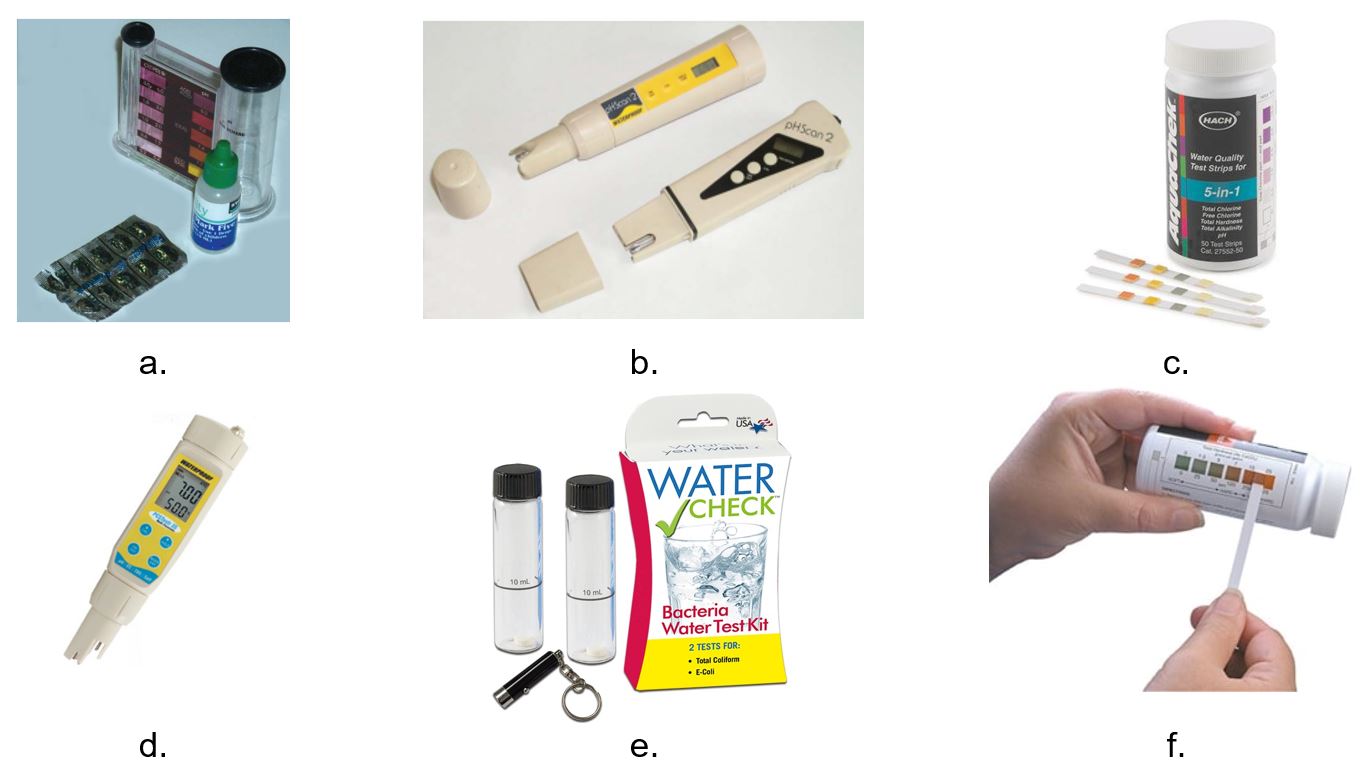While laboratory water tests provide robust information on water quality, the time required for analysis can delay critical decisions and issue mitigation, which could have bird health implications. On-farm water quality testing, using basic kits and meters can provide basic and quick water quality data (see Figure 8 for examples). They can be used instantaneously to control potential issues, while more accurate laboratory analysis is being conducted. It should be noted that major decisions should not be based on a single test. Two to three tests that yield similar results will provide a more solid basis for decisions.

Chlorine residual test—A disinfectant residual indicates the effectiveness of the sanitisation program. Most chlorine test kits can detect both free and total chlorine. Total chlorine does not distinguish between the chlorine that is bound to organic matter and free chlorine (i.e. chlorine that is available for disinfection). As only free chlorine is capable of water disinfection, this is the measurement to use to assess the effectiveness of the sanitisation program.
pH and EC meter—pH and EC can be an indication of changing source water quality or the effectiveness of disinfectant in the distribution system.
Strip tests—Strip test are inexpensive and straightforward to use. Some strip tests will assess multiple parameters. They give a rough range of water quality parameter concentrations. Water quality parameters that can be measured by strips include: free chlorine, total chlorine, total hardness, total alkalinity, pH, nitrate, iron, copper, phosphate, peracetic acid, lead, sulphite, peroxide, etc.
Oxidation-reduction potential (ORP) meters—ORP is a measurement that indicates the degree to which a substance is capable of oxidising another substance. The ORP meter can be a useful tool for identifying water supplies that have inadequate chlorine residual and for adjusting the residual without overusing chlorine.
UV or colour meter—These meters indicate the concentration of organic matter.
TDS meter—A TDS meter indicates the TDS of a solution.
Bacteria test kits—There are several bacterial or E. coli test kits available. These tests are slightly more complicated than the above-mentioned chemical test, and usually need 2–3 days to work.

